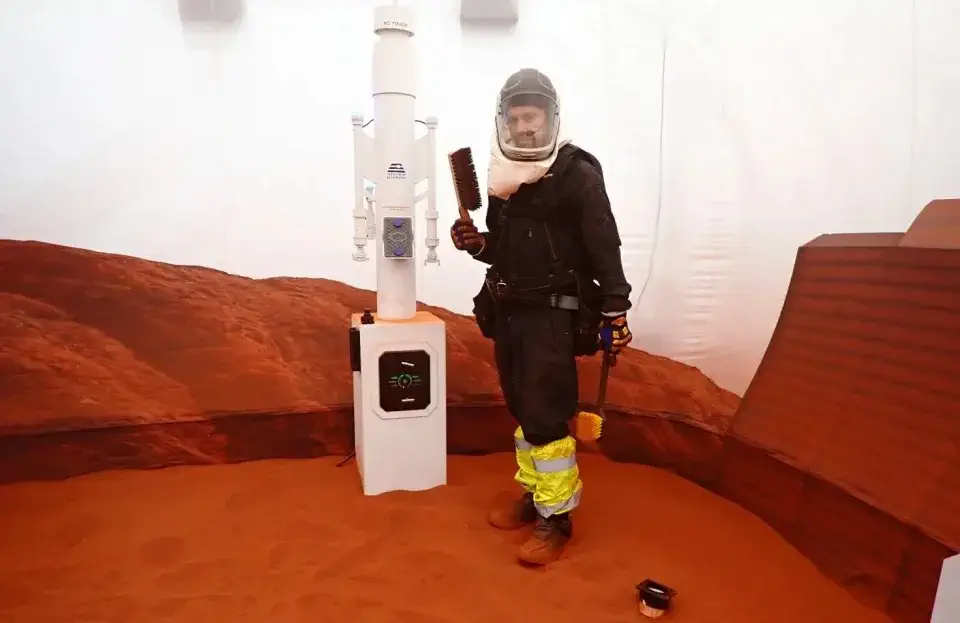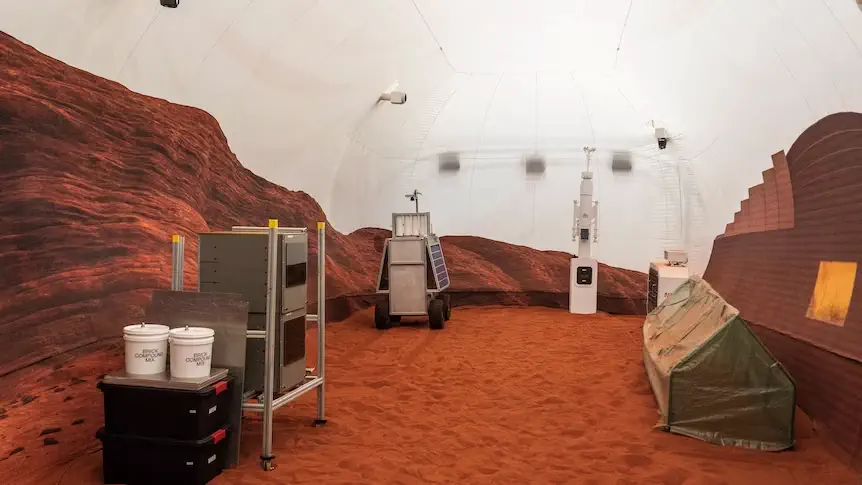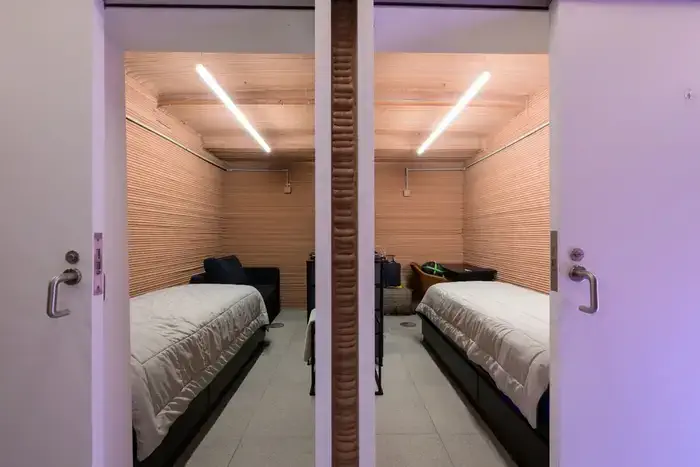
NASA is searching for four individuals to participate in a pretend Mars mission. They issued a call for applicants willing to spend a year in a simulated Mars habitat, offering compensation.You can apply on the CHAPEA website until April 2.
They seek healthy adults with science degrees, military, or piloting experience.
The Crew Health and Performance Exploration Analog (CHAPEA) conducts one-year “missions” where volunteers, acting as analog astronauts, live in a 3D-printed habitat in Houston, Texas, simulating space conditions.

The chosen volunteers will join NASA’s one-year simulated Mars surface mission to gather data for future human exploration of the red planet.
This is NASA’s second year-long Mars experiment, following the one that began in June 2023.
The upcoming CHAPEA Mission 2, the second installment of a planned trilogy, is set to commence in spring 2025.
During these missions, a carefully selected four-person crew will collaborate and live within a spacious 3D-printed base spanning 1,700 square feet.

This base is located at NASA’s Johnson Space Center in Houston, serving as a realistic simulation environment for space exploration missions.
The base, known as Mars Dune Alpha, mimics the difficulties future Mars explorers will encounter, such as limited resources, equipment malfunctions, communication delays, and other stressful scenarios.
Applications for the second CHAPEA mission are available until April 2, with the mission expected to launch sometime in 2025.
Nasa’s Requirements for Simulated Mars Astronauts
NASA seeks fit, non-smoking American citizens aged 30 to 55, fluent in English, and eager for unique adventures. Candidates must also be keenly interested in aiding NASA’s preparations for the inaugural human mission to Mars.
Crew members need a master’s degree in a STEM Field like engineering, math, biology, physics, or computer science. They also require at least two years of professional STEM work experience or a minimum of 1,000 hours piloting aircraft.

Applicants must undergo a criminal background check, psychiatric screening, and medical evaluation to qualify. They’re committing to a year of intense isolation in tight quarters with three others, following a strict schedule.
The application provides insights into the job’s demands by asking questions such as: “Are you ready to eat packaged, long-lasting space foods without having a say in the menu for a year?” and “Are you prepared to spend extended periods, up to two weeks, with little or no contact with family and friends?”

Further, there are monthly tests for blood, urine, stool, and saliva, limited use of social media, and a 20-minute delay in communications with people outside the habitat.
NASA states that food allergies, dietary restrictions, and gastrointestinal disorders are disqualifying factors because CHAPEA cannot accommodate them. Certain medications, such as blood thinners and sleeping aids, also disqualify applicants.